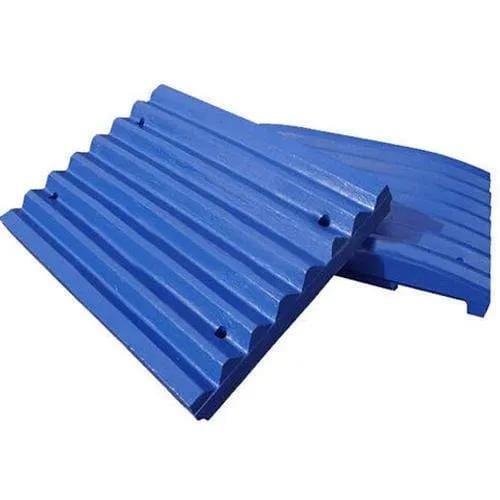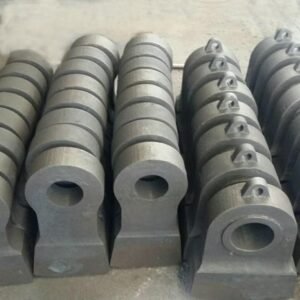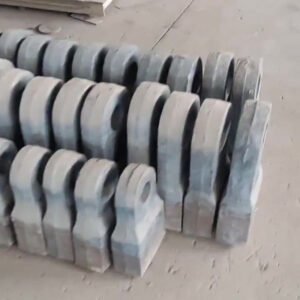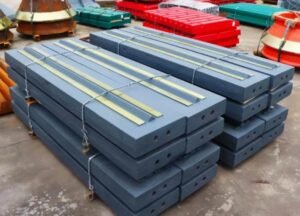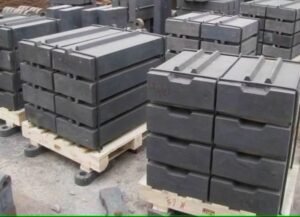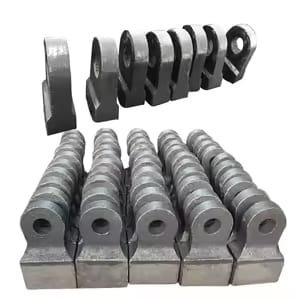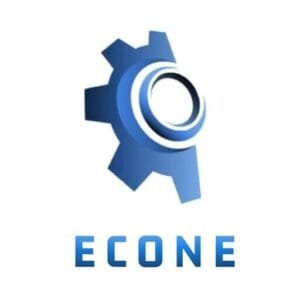Introduction
Selecting the right jaw crusher plate is critical for optimizing crushing performance, reducing wear, and lowering maintenance costs. The material, hardness, design, and application-specific factors all play a role in determining which jaw plate is best suited for your needs.
In this guide, we will explore the key factors that affect jaw crusher plate selection, compare different materials, and provide practical advice to ensure you choose the most efficient and durable option for your crushing operation.
1. Understanding the Importance of Jaw Crusher Plates
Jaw crusher plates are essential components that directly impact crushing efficiency. These plates, also known as jaw dies or liners, are responsible for crushing materials by applying force to them.
A poorly chosen jaw plate can lead to:



Selecting the right jaw crusher plate ensures:


To make the best choice, consider the material properties, plate profile, and application-specific factors.
2. Key Factors to Consider When Choosing Jaw Crusher Plates
2.1. Material Composition
Jaw crusher plates are typically made from manganese steel, alloy steel, or other wear-resistant materials. Each material has its advantages and is suited for different crushing applications.
(a) Manganese Steel (Hadfield Steel)





(b) Alloy Steel Jaw Plates





(c) Titanium Carbide (TiC) Reinforced Plates




2.2. Jaw Plate Profile & Design
The shape and profile of a jaw crusher plate determine how materials are crushed.
| Jaw Plate Type | Best For | Pros | Cons |
|---|---|---|---|
| Standard Jaw Plates | General crushing | Balanced wear resistance | Not specialized for extreme conditions |
| Corrugated Jaw Plates | Crushing large materials | Increased gripping, reduces slippage | Higher stress concentration |
| Toothed Jaw Plates | Recycling, concrete crushing | Better material flow | May wear faster on hard rock |
| Reversible Jaw Plates | High-wear applications | Can be flipped to extend lifespan | Requires proper maintenance |
Choosing the right profile ensures efficient crushing, reduces unnecessary wear, and extends service life.
2.3. Crushing Application & Material Hardness
Different materials require different jaw plates:
- Hard & abrasive materials (granite, basalt, quartz) → High-manganese steel or TiC-reinforced plates.
- Soft materials (limestone, coal, asphalt) → Standard manganese steel or alloy steel plates.
- Recycled materials (concrete, demolition waste) → Toothed or corrugated jaw plates for better grip.
Using the wrong plate type can lead to rapid wear and inefficient crushing.
2.4. Jaw Plate Thickness



2.5. Crusher Type & Operational Conditions
Different jaw crushers require different jaw plates:
- Primary jaw crushers require tougher, impact-resistant plates.
- Secondary jaw crushers need more wear-resistant, abrasion-proof plates.
Also, consider:
- Feed size & gradation – Affects wear pattern.
- Crusher speed & stroke – Determines how plates interact with materials.
3. How to Extend Jaw Crusher Plate Life
Even the best jaw crusher plates will eventually wear out, but you can take steps to maximize their lifespan.
3.1. Rotate & Replace Jaw Plates Regularly
- Monitor wear patterns – Uneven wear can indicate misalignment or feeding issues.
- Flip reversible plates when the first side wears down.
- Replace plates before excessive wear reduces crushing efficiency.
3.2. Optimize Crusher Settings
- Ensure even feed distribution – Prevents localized wear.
- Adjust CSS (Closed Side Setting) – Affects material size and wear.
- Monitor crushing force – Avoid excessive pressure that can accelerate wear.
3.3. Proper Material Feeding Techniques



4. Comparing Costs: Upfront vs. Long-Term Savings
While higher-quality jaw plates may cost more initially, they offer significant long-term savings:
- Fewer replacements = Lower downtime costs.
- Better wear resistance = Less frequent maintenance.
- Improved efficiency = Higher crushing output.
Investing in high-quality jaw plates saves money in the long run.
5. Where to Buy High-Quality Jaw Crusher Plates
When sourcing jaw crusher plates, consider:



Manufacturers in China, India, and Europe offer competitive pricing and quality jaw plates.
6. Conclusion: Choosing the Best Jaw Crusher Plate
Selecting the right jaw crusher plate is crucial for efficient crushing, lower wear costs, and extended equipment life.
Key Takeaways:




By choosing the right jaw plate material, design, and maintenance strategy, you can maximize crusher efficiency and reduce operational costs.
